Moving abroad does not mean you have to give up the sweet sweet rewards associated with your US based credit cards. There are just a few things to consider and research before making the jump abroad. As I’ve lived abroad for some time, this post will lay out all the strategies and tips I’ve acquired since then.
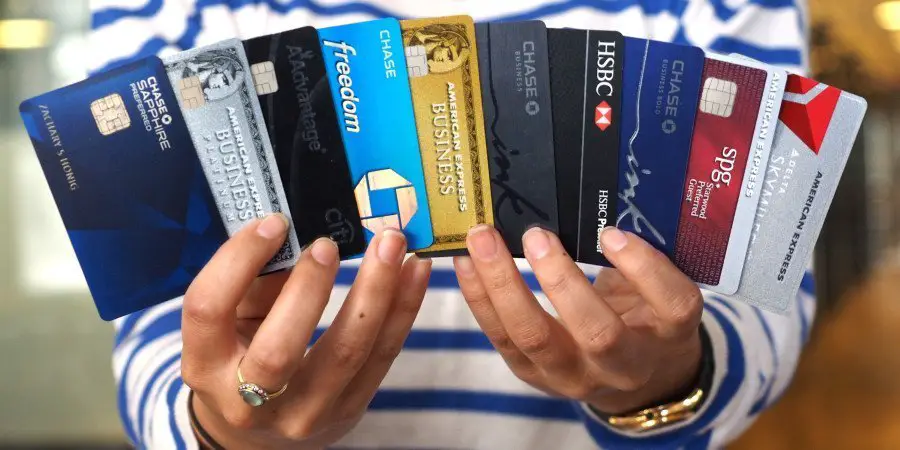
If you’ve never read my blog before, then I will quickly inform you that I am a self proclaimed master credit card hustler and avid participant of the churning game. If you need proof, then just read my guide to travel hacking where I talk about how I travel the world for free with my 20+ credit cards. While there are more obstacles to entry as far as churning in another country goes, I do it to the best of my ability because how can you say no to free money?
Are you allowed to keep US credit cards when living abroad?
If you’re about to live abroad or planning on a long stint out of the country, you might ask yourself am I even allowed to keep my credit card if I’m no longer living in the US?
The answer is absolutely yes.
You are not the first US citizen to live outside of the US and certainly not the last. Many retirees will retire abroad and all of their finances will still be done in US Dollars. This means banks will want to keep their relationships and business with these clients. If you’re moving abroad, do not cancel all of your credit cards unless you are churning like me and know which ones need to be.
Credit cards in the rest of the world
The reason you’ll want to keep your credit cards is that the offerings in the rest of the world pale in comparison to how generous US credit cards are. I’ve lived in South Africa and Germany and can safely say that the credit card offerings are a joke. If you can even find one that does not charge you an annual fee, you can guarantee that there is no such nothing as meaningful sign on bonuses and point earning potential that is anywhere close to their US counterparts.
This is why I recommend any expat or expat to be to apply for US credit cards before they move abroad.
Interchange fees
Banks charge merchants a fee when you use your credit card. In the US, one of the main reasons they can offer such lucrative rewards is because the interchange fee is somewhere between 2 and 3% per transaction. That means if you pay $100 at a restaurant, that restaurant will pay $2 to $3 to the bank as a fee.
In Europe for example, the EU has capped interchange fees to 0.3% which means the same $100 transaction will only be $0.3 at most. This means banks don’t make nearly the amount of money that they do. So what happens if you use a US credit card in Europe? Do you still get the same amount of points?
Yes.
My favorite card is the Chase Sapphire Reserve which earns a whopping 3x Ultimate Rewards points on dining and travel. If I go to a delicious restaurant in Puglia, Italy and pay the equivalent of $100 for my bill, this means my bank (Chase) will only earn $100 * 0.3% = $0.30. However, they promised me 3x on dining so I still get 300 points which is worth much more than 30 cents. In fact 300 points is worth at least $4.50 because you can redeem these points at a 50% premium when done for travel.
So in fact, living abroad and earning all these points means my bank is losing money while I pocket rewards that would never be possible from the same credit cards in my country of residence.
Pick the right card before moving abroad
So now that you’re ready to move abroad, which credit card should you use before moving abroad?
Well it is almost impossible to just pick one! Since I am very much into churning credit cards, I made sure to keep all my credit cards before moving abroad.
No FX Fees
The first and main criteria for choosing a card when moving abroad is to make sure there are no FX fees. FX fees are usually somewhere around 2.5% so it’s likely any rewards you earn will be negated by this fee. Thankfully, almost all cards worth getting in the US do not have FX fees anymore.
Visa and Mastercard Only

The second criteria is to make sure your card is a Visa or Mastercard. American Express has lots of cards with extremely lucrative rewards but the problem is most of the world does not accept AMEX. Outside of the fancy hotels and restaurants, I’ve not seen any merchant in Germany accept AMEX. I would highly recommend getting a Visa card as this is by far the most universally accepted.
Chip and Pin
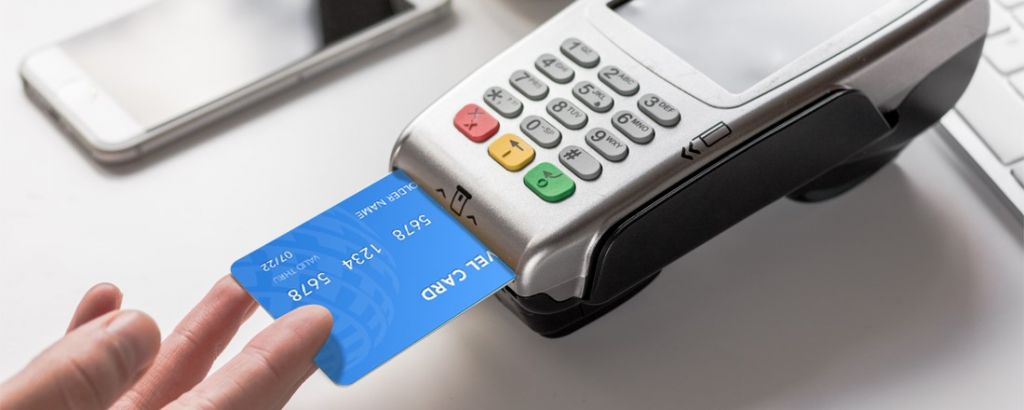
The third criteria is to make sure it is a chip and pin card. The rest of the world moved away from swiping cards a decade ago and the US is just catching up. Many of the banks in the US have started to migrate their cards from magnetic strip only to magnetic strip and chip/pin. Make sure you have a chip/pin version of the card before moving abroad. However, this is not even that important anymore as most of my cards can be loaded onto mobile pay services.
So which card to get?
My favorite card is without a doubt the Chase Sapphire Reserve. I’ve had it for many years and carry it with me no matter where I go. It earns 3x on travel and dining around the world. This part is key because it means dining and travel purchases in any country. See the above section on interchange fees!
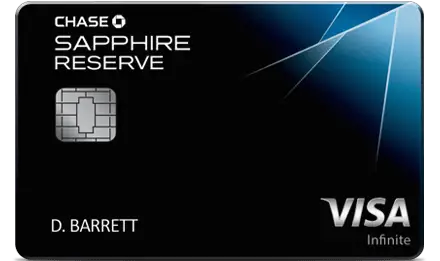
The points can be redeemed for a 50% bonus which means I’m essentially earning 4.5% back on most of my transactions. The UR points can also be transferred to a wide array of airlines and hotel chains so I like to keep that option if I am flying business class.
I won’t go into too much details about the benefits of credit cards and the CSR in particular. You can read about that in my Ultimate Guide to Travel Hacking as well as why I think Chase credit cards are the best credit cards.
As for the other options, here are many cards that do not have FX fees, and have Chip and Pin. Note that you should only get AMEX if you’re moving to a country that has a wide adoption of it.
- Chase Sapphire Reserve
- Chase Sapphire Preferred
- Chase Ink Preferred
- Chase United Mileageplus
- Chase United Mileageplus Business
- Chase World of Hyatt
- Chase IHG card
- Barclays Jetblue and Jetblue Business cards
- Barclays Aviator Red and Aviator Business
- Barclays Uber Visa
- Citi Prestige
- Citi Premier
- Citi AAdvantage and AAdvantage Business
- Bank of America Alaska and Alaska Business
- USBank Altitude
- AMEX Platinum and Platinum Business
- AMEX Gold Card
- AMEX Delta Gold and Platinum Personal
- AMEX Delta Gold and Platinum Business
Keep a US Bank Account
Well this is pretty obvious. You need to keep your US Bank accounts open to pay your US credit cards. You should just be keeping a US bank account anyway if you have any desire of moving back.
Charles Schwab Checking Account

I would also recommend opening a Charles Schwab checking account as this is a completely free account where you can withdraw from any ATM worldwide and have the ATM fees completely reimbursed. This is totally necessary if you’re living in a developing country or somewhere like Germany where cash never went out of style.
Maintain US Residency
In order to keep your US Bank account, you’ll likely need to keep some sort of residency in the US. The US is very very hands off and lax about keeping tabs on where their citizens are. If you moved out of your apartment and never changed your address, the new tenant will continue receiving your mail and your bank will never know you moved. I’m not advocating this approach but it just goes to show that it’s quite easy to maintain residence in the country.
If you don’t like this approach, then just change your address to a family member, close friends, etc. and move on. It’s 2020 anyway so who even cares about mail anyway? I tell my bank to send me absolutely nothing by mail because why waste paper when everything is online?
Transferring money back to the US
If you are using US credit cards, you will need to pay your balances in US Dollars. If you’re living abroad and earning money in the local currency like I am, then you will need a way to transfer money back to your US Bank account in order to pay off the balance.

As I live in Germany, I am earning Euros. I have a German bank account living in Frankfurt and it only transacts in euros. There is no way to pay off a US credit card with an European bank account. They are on a totally different system in Europe using IBAN and Swift codes whereas the US has routing numbers etc. All in all, you need to transfer your money back to the US somehow.
There are numerous ways to do this and in the past, these methods carried hefty fees wiring money from one bank to another and often times the FX rate is undesirable. If the fees become too high, then it doesn’t make sense to lose money transferring money just to get a few reward points on your credit card.
If you read the above section and obtained the Chase Sapphire Reserve before moving abroad, then you will at 3x points on dining and travel (which is at minimum 3% back) and 1x points on everything else. As most of my expenses are dining and travel related (yours may be different), I put my ceiling of acceptable fees at 3%.
Use Revolut
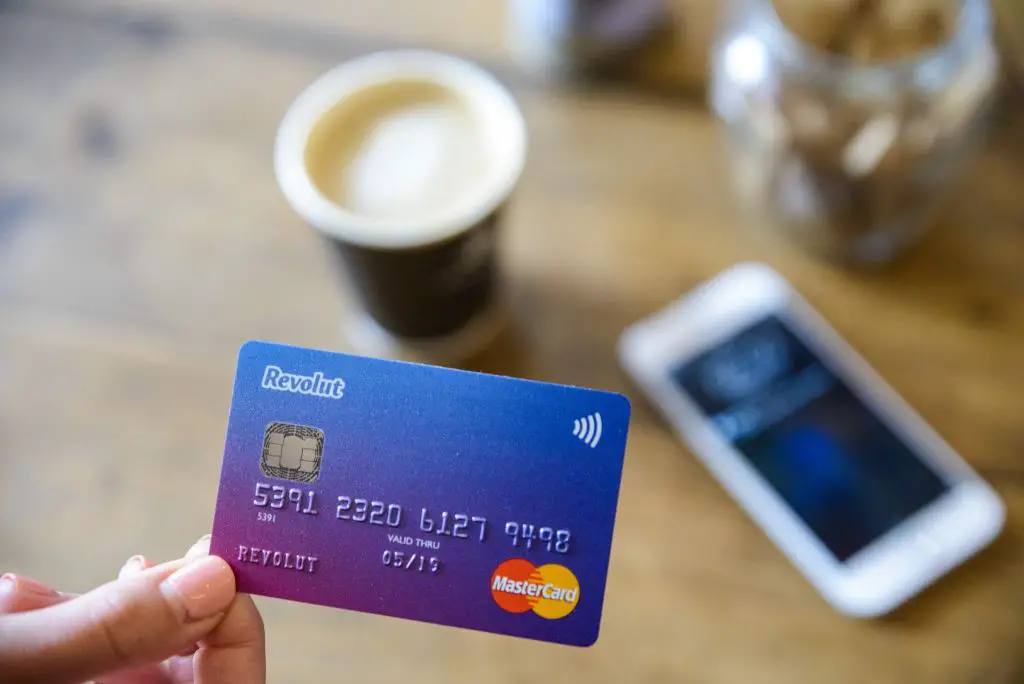
Enter Revolut. This has been a complete revelation to me living in Europe. With Revolut, I can transfer money between Euros and US Dollars at the spot rate with zero fees. Yes it sounds too good to be true (and I thought so too at first) but I can guarantee you that it works. You can do a lot of other things with Revolut too but I primarily use it to transfer money from my German bank account back to my US bank account (and vice versa).
This way I can pay off my US credit cards without paying any extra bank fees to transfer the money. It’s almost as if I never left home.
For a detailed write up on Revolut, I’d highly recommend reading my Revolut review to fully understand how to take advantage of this amazing service.
Use Mobile Pay
As soon as you leave the US, you’ll quickly realize no one else has our backwards approach to paying with credit cards at a restaurant. What do I mean by this? Think about the last time you went to a restaurant and the bill came. You put your credit card into the check, and the waiter takes it back to their antiquated machines, swipes the card, and brings you the receipt. Then you write, by hand, the tip amount, and the total bill amount.
Most foreigners think this is madness that someone can just walk away with your credit card, and I kind of think this too now that I think about it. Don’t worry, the rest of the world is with the times and the waiter brings you a credit card payment console where you can insert your card and pay on the spot. This means that Mobile Pay like Apple Pay or Google Pay will also work as these machines are all NFC approved.
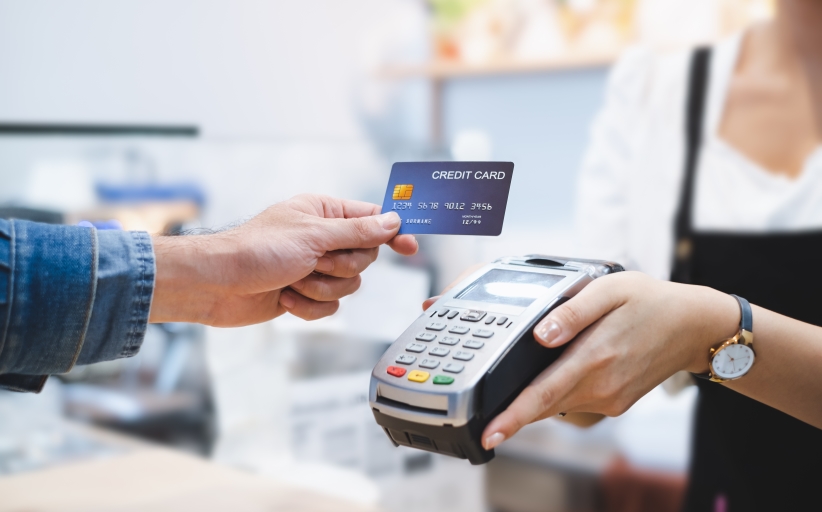
As an expat, the only time I ever use my credit card physically is to buy something online and the odd gas station. Every restaurant, grocery store, department store, etc has wireless credit card readers where I can pay with my phone. This actually makes managing US credit cards while living abroad easier as I do not need to carry around as many cards with me. If I lose a card, it is still stored on my phone so I can continue using the card while a replacement comes (which can take longer since they need to ship internationally).
What if you lose a card?
What happens if you lose a credit card while living abroad?
It really depends on your bank but most banks will offer to ship you the card no matter where you are in the world. Your relationship with the bank will also be important as to the speed they send you the card and if they charge you any fees.
As I do most of my banking and credit cards with Chase, I have a strong relationship with them. I also spend a lot of money on the credit cards I have with them and they definitely factor that in. I’ve lost my cards on a few occasions and a quick call to the Chase Customer Service and they’ve shipped me the cards to my address abroad. Sometimes they even overnight the card if I tell them I urgently need it. I try not to take advantage of this too much unless I really do the card asap.
How I churn credit cards as an expat
Everything before this section is for the novices that are curiously wondering how they will keep their finances in check when moving abroad. If you’re reading this section, then welcome to the big boys club. If you’re not familiar with churning, then please read my travel hacking guide and come back as it will make more sense.
How to apply for new credit cards when living abroad
Living in another country makes churning credit cards slightly more difficult. It’s not prohibitive but here are some things to consider:
- US banks will not approve your applications if you have a foreign address
- If you’re applying for a new card, Banks will likely not be willing to send it to anywhere other than the address you have on file (which would be a US address)
- Paying your balance in US Dollars (taken care of by Revolut)
- Churning AMEX cards is very difficult unless you can manufacture spend
The main barriers to entry is really getting the physical card.
I circumvent this problem by sending everything to my parents house and they will mail me the card once they receive it. Some cards are compatible with Mobile Pay so I don’t even need the physical card anymore. I just need to see the card details and add it to my phone. Once I have it on my phone, I can pay with it anywhere I go that accepts credit cards. If I need to buy something online, I don’t need the physical card either as I can just have my parents tell me the card details.
Sadly, all of Chase’s business cards are not compatible with mobile pay and these cards offer some of the most lucrative sign on bonuses. For this situation, I need to have the physical card so my parents will send it by mail (or bring it in person if they’re visiting).
If this is not an option, then I’d recommend getting a virtual mailbox where you have the option of having the mail sent to your address abroad.
Keep a US Phone number
You should also keep a US based phone number. A lot of banks will have 2 step verification and a foreign phone number will not cut it. Many times, you cannot even call into customer support the same way unless you have a US phone number.
This is easily remedied by opening an account with Google Voice which gives you a US based phone number run entirely on data. This means you can receive text messages and calls to this number anywhere in the world as long as you have data.
Churn away
Other than these factors, I churn the same way I do in the US. I research the cards I want, apply for them, and maintain them in my trusty credit card spreadsheet the same way I’ve always done. However, one thing to note is that it is inadvisable to churn cards with FX fees unless you can manage to find USD based expenses or you’re purely opening the card for the sign on bonus.
A good example of this was when I signed up for the Chase Ink Unlimited which had a 50,000 point sign on bonus but had FX fees. I made a hotel booking for a group of friends on booking.com and met most of my MSR (Minimum spend requirement) in one go.



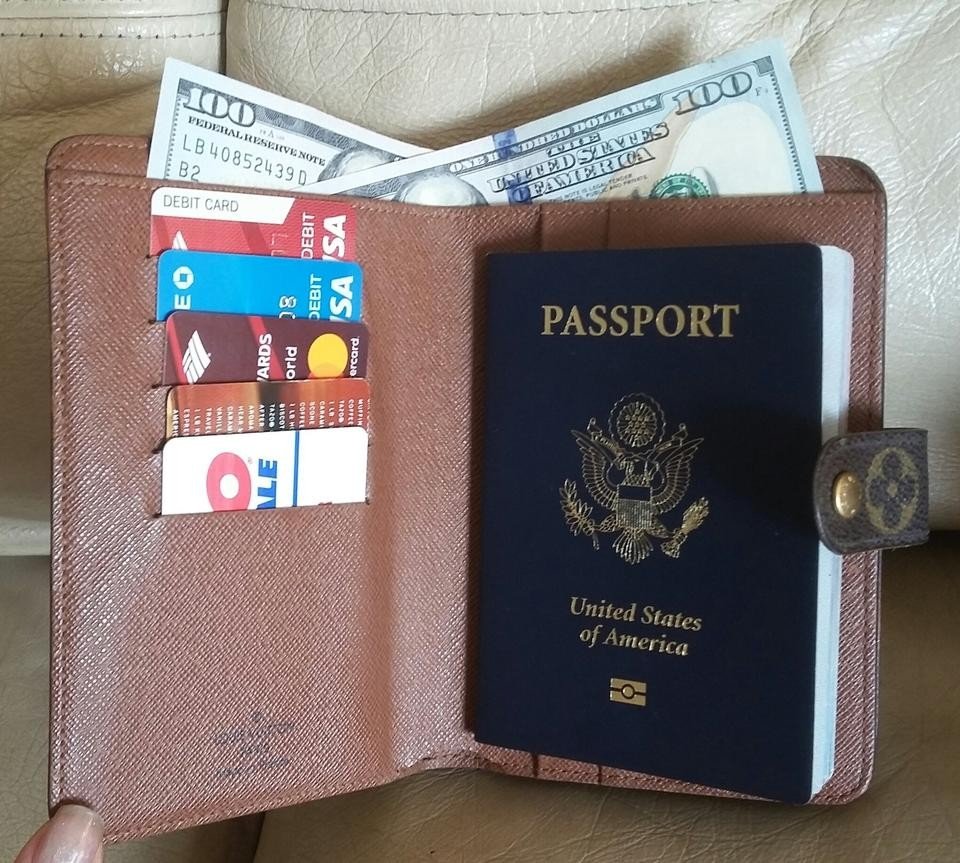






Regarding US phone numbers abroad, Google Voice (as well as other VOIP providers) sometimes isn’t a viable option because some corporate messaging systems don’t recognize those numbers and won’t send 2FA codes to them. There is really no way to know if this is true without trying it. I’d suggest also getting a number from a traditional phone company, maybe something really cheap like FreedomPop, that supports WiFi calling.
Yes that’s true. I sometimes have troubles with the text message using Chase and Venmo definitely doesn’t accept GVoice.
Amazing article, I am a new blogger, these are helpful things thanks for sharing.
Or in a way to churn and MS to get the bonuses as an expat. Theres no walmart, no VGC, etc..
Thats MS mate, not the same as churning.
I was actually looking for the part of how to churn as an expat… Didnt find it in the article. Not an ultimate guide 🙁